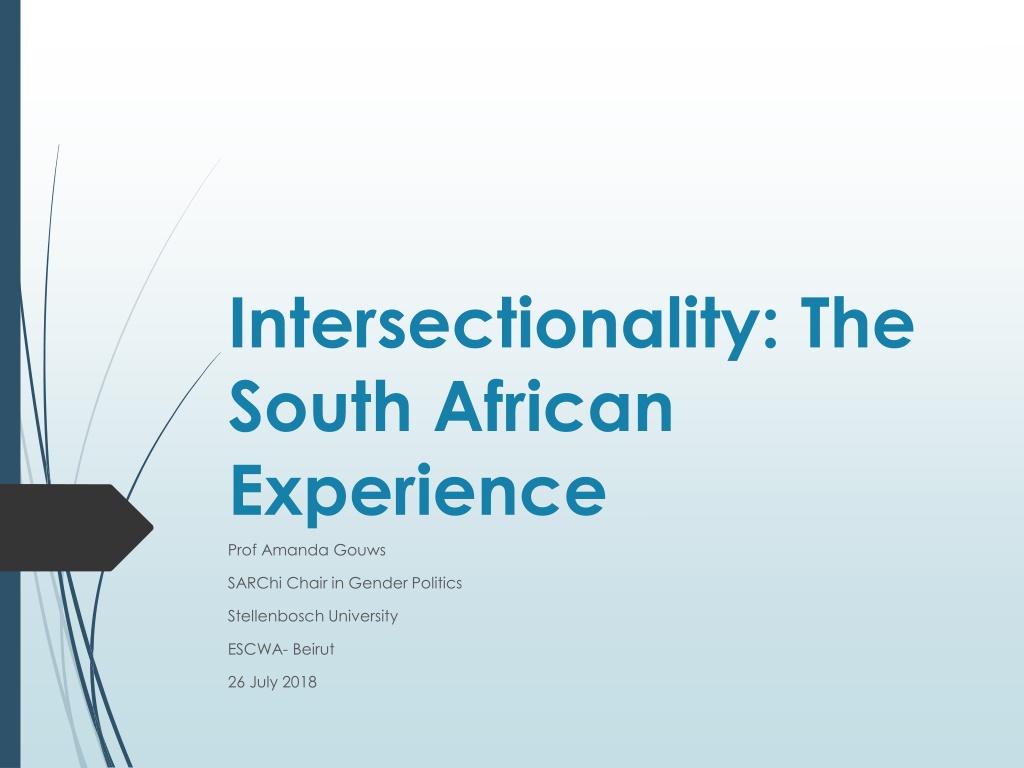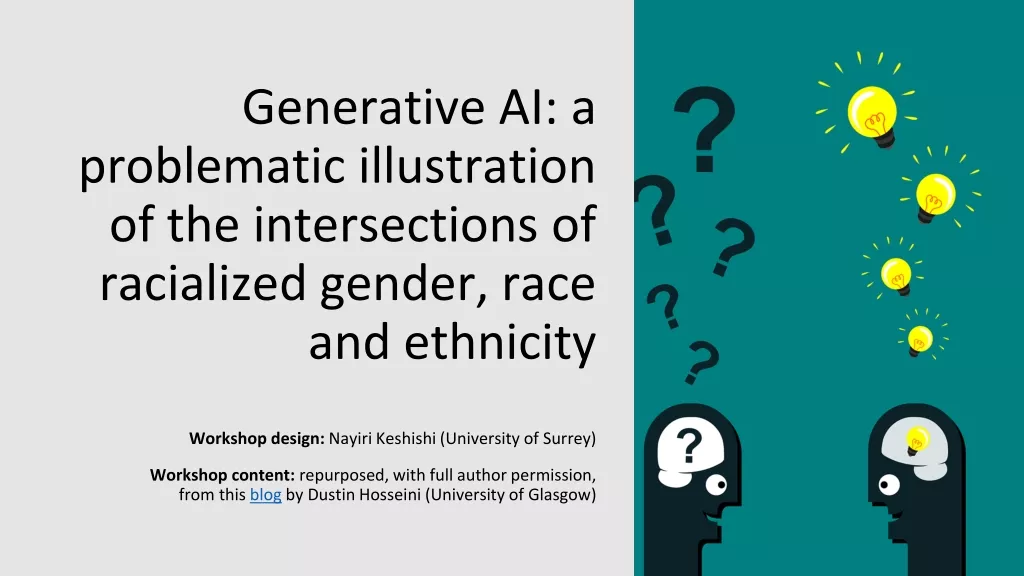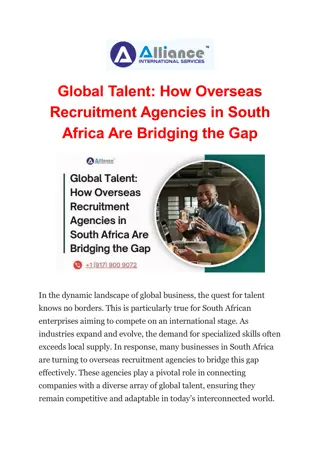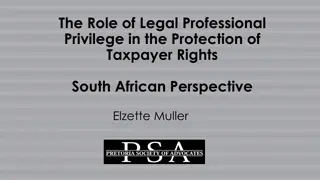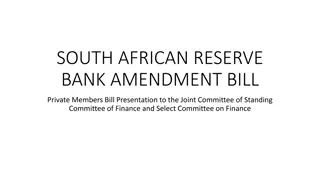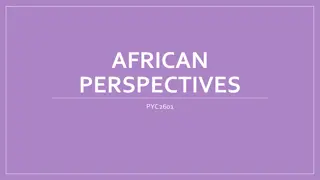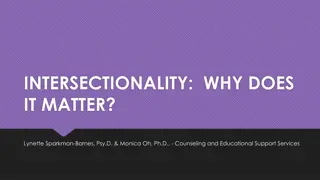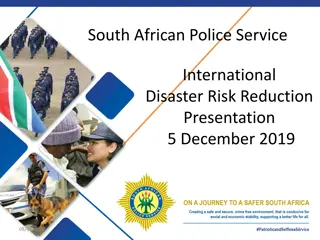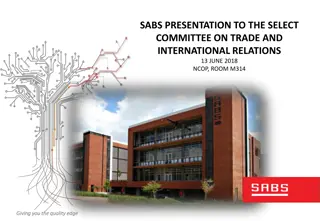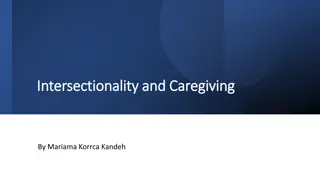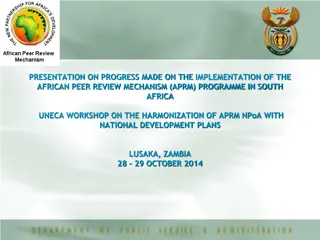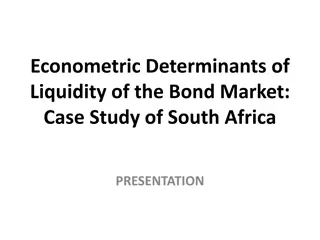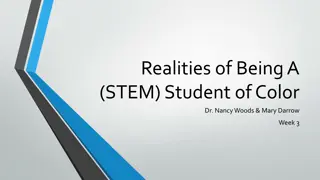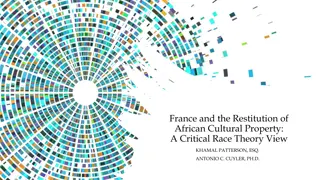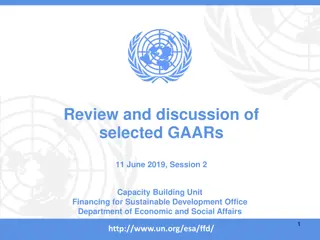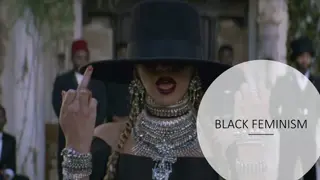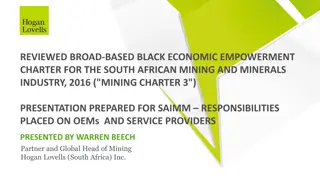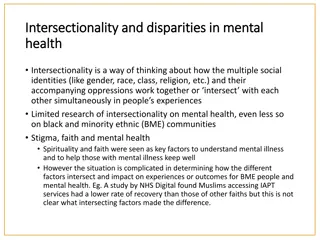Intersectionality in the South African Context
Prof. Amanda Gouws discusses intersectionality in the South African experience, touching on issues of gender, race, and discrimination. Kimberle Chrenshaw's work on gender and race oppression is highlighted, emphasizing the complexity of identities and power dynamics. The concept of a matrix of domination is explored, emphasizing the co-constitutive nature of identity categories. The discussion delves into how different vectors of power intersect, shaping experiences and resistance strategies in a multifaceted society like South Africa, marked by diverse identities and systemic inequalities.
Download Presentation

Please find below an Image/Link to download the presentation.
The content on the website is provided AS IS for your information and personal use only. It may not be sold, licensed, or shared on other websites without obtaining consent from the author. Download presentation by click this link. If you encounter any issues during the download, it is possible that the publisher has removed the file from their server.
E N D
Presentation Transcript
Intersectionality: The South African Experience Prof Amanda Gouws SARChi Chair in Gender Politics Stellenbosch University ESCWA- Beirut 26 July 2018
Intersectionality Kimberle Chrenshaw (American legal scholar) - gender and race to understand discrimination against black women What is the most oppressive: gender? Race? All women are white, all men are black (Essenstialism) Over time more identity categories were added: class, sexuality, disability, ethnicity Viewed as additive leads to the Olympics of Oppression This type of intersectionality focuses on identity
Matrix of Domination Additive is single axis thinking We need to think of it as a matrix of domination How lived identities, structural systems of power, sites of marginalization and modes of resistance intersect in dynamic, shifting ways (Vivian May) These different categories are co-constitutive
Intersectionality focuses on how different vectors of power eg ontology (subjectivity), epistemology (knowledge), identity, experience, praxis (how resistance works /agency) Sirma Bilge: interlocking relations of dominance of social, political, cultural and economic dynamics and power that is multiple and determined simultaneously
The Complexity of South African Identities Imposed Racial Identities White, African, Colored (mixed race) Indian Ten African ethnic groups + Khoi and San (indigenous people) Most unequal country in the world (class) Very high rates of poverty (nearly 50% of population) One of the highest rates of gender based violence in the world (2016/2017 statistics 49 660 reported rapes) (gender and sexuality) High rates of disability Many different religious denominations (Christian, Muslim, Hindu and African indigenous religions 18 million people living in rural areas (rural/urban divide)
#EndRapeCulture in South Africa Black women students call themselves: radical, intersectional, African feminists Focus on how Black women s sexuality under colonialism was portrayed as savage, insatiable, depraved and rapable In South Africa a deeply racialized society, every encounter between people is already racialised race (Black African is foregrounded as the main constituting category (white women felt excluded) Is white a dimension of intersectionality (is masculinity?)
In the marches students emphasised black womens sexuality (gender,race and sexuality) African identity was articulated in relation to white privilege (class) they included the janitors (class solidarity) This was about anger about sexual violation and the abandonment my male students (gender) We cannot separate identities of race, sexuality, gender and class here. Power deeply embedded in relationships between men and women Women used agency and voice
Strategies to Ensure Intersectional Accommodation (Vivian May) Projects cannot treat women as a homogeneous group We need to understand the structural power relations created by intersectional identities Understand how systems of power reinforce each other and how hierarchies exclude women We need to understand intra as well as intergroup differences Intersectionality shows how oppression and resistance operates and how agency is claimed We need to understand structural exclusions We need to investigate possibilities for solidarity
How does power ensure the privilege of some and the disadvantage of others? Understand the lived subjectivities of people It is a body experience how intersectionality is written on the body (skin color, features, what type of clothes women wear) Understand discourse how are women talked about, how do they feature in official narratives is it liberatory or confining? What does the matrix of domination look like? We need to look at the history of a group What are the biases and distortions?
When does it become identity politics? When one dimension is essentialised at the cost of others This is a problem where countries have histories of oppression People may experience one dimension as the constitutive dimension of their identity (Black, Muslim etc) In South Africa race is linked to the experience of exclusion and marginalization The experience of black pain We need to think about how religion may be used as the constitutive identity in Arab countries
